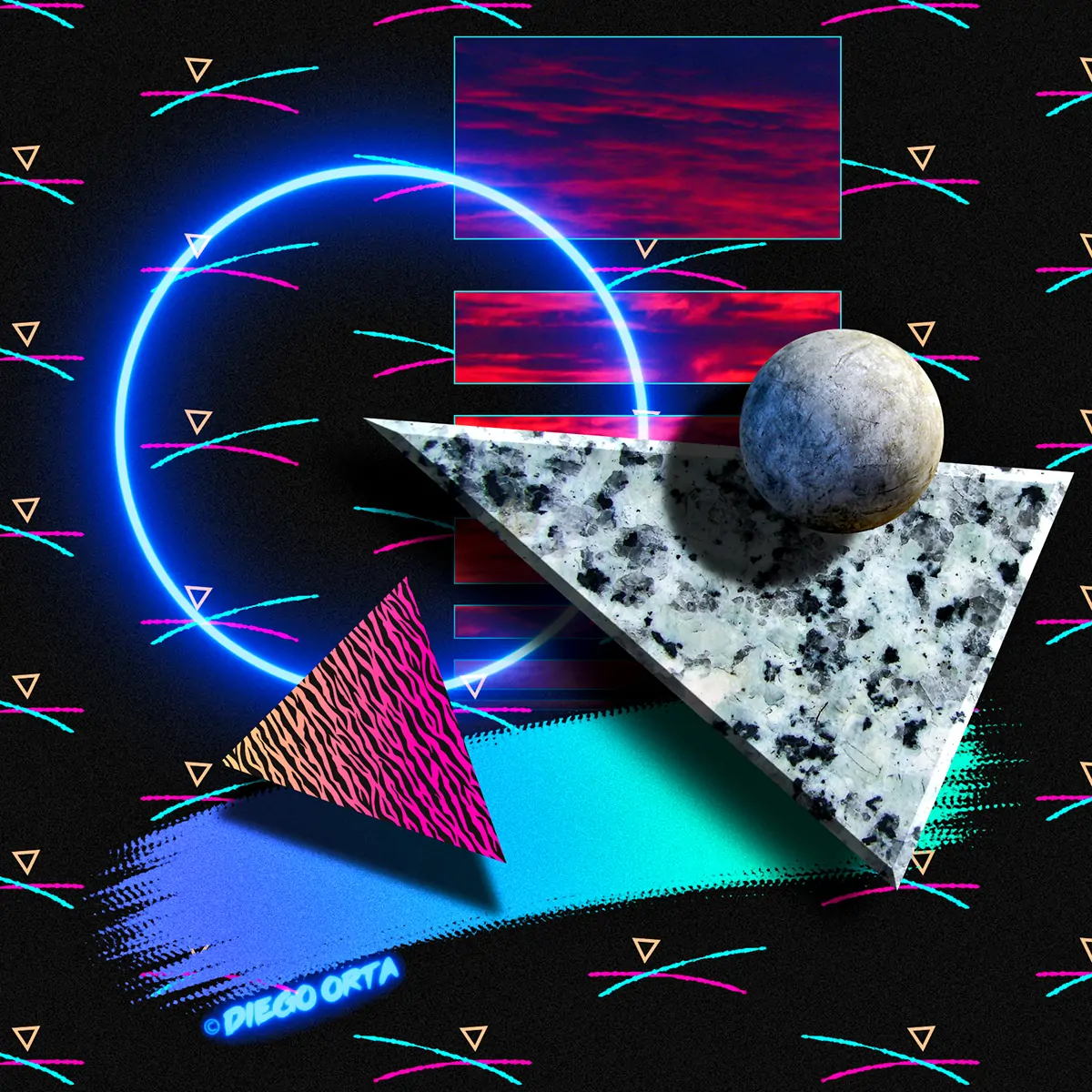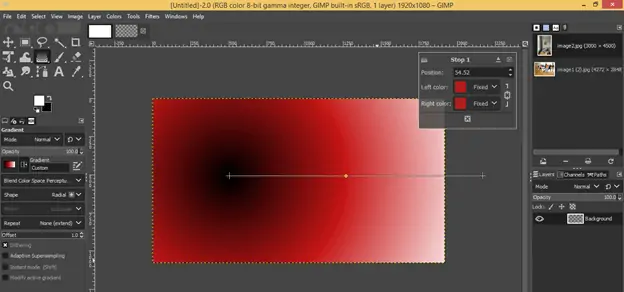
How To Create New Wave Images
The term “New Wave” graphic design describes the radical, nonconformist graphic design trend that arose in the late 1970s and early 1980s. Bold, vibrant, and alluring, New Wave graphic design broke with the futurist and Swiss design conventions that came before it. Vibrant, strong hues like neon pink, acid yellow, electric blue, and turquoise were emblematic of this art style. The bright colors contrasted sharply with the dark color schemes used by past corporate and modernist designers. Triangles, circles, lightning bolts, and zigzags are examples of geometric shapes used in New Wave graphics to give movement and excitement to contrast with the strong colors. Abstract patterns and themes produced optical brightness and textures. The striking, captivating New Wave designs never stop emulating the visual vigor of the art pieces. The raw, anti-establishment punk aesthetic that swept through music and culture in the late 1970s is a source of inspiration for modern artists as well. This blog will likewise give a brief on using contemporary software and techniques to create exquisite new wave art images.
Step 1: Concept Defining
Choose which components of New Wave culture reverberate with you and rouse your aesthetic vision.
Distinguish particular subjects, aesthetics, or messages you need to communicate through your art.
Consider how you’ll reinterpret and combine these components into your style and inventive expression.
Think about the mood, environment, and feelings you point to inspire along with your New Wave-inspired artwork.
Explore how New Wave’s emphasis on singularity, experimentation, and unconventional narrating can impact your aesthetic approach.
Boost your vision by narrowing down key concepts and concepts that will direct your aesthetic process.
Keep an open mind and permit your vision to advance as you delve more deeply into the exploration of New Wave culture and its effect on art and society.
Step 2: Software Selection
Explore and compare image editing software alternatives accessible, such as Adobe Photoshop, GIMP, or Affinity Photo.
Evaluate components like user interface, functionality, and compatibility with your operating system.
Determine which software adjusts best to your workflow and artistic inclinations.
Make use of trial versions or free software choices to test out distinctive programs before committing to one.
Investigate online tutorials and user reviews to get insights into the capabilities and limitations of each software.
Choose the program that gives the highlights and tools you require to bring your New Wave-inspired vision to life.
Introduce and familiarize yourself with the chosen software, investigating its interface and experimenting with essential altering tasks to make familiarity with its functionalities easier.
Step 3: Using Appropriate Tools
Practice with your preferred image editing software settings and investigate its different tools, menus, and highlights.
Begin with essential altering errands like cropping, resizing, and adjusting colors to familiarize yourself with the software’s interface.
Try using different effects, filters, and blending modes to achieve the desired effect on your work of art.
Investigate tutorials, guides, and online assets to learn new methods and workflows particular to New Wave-inspired art.
Experiment with incorporating New Wave aesthetics, such as bold colors, energetic compositions, and unusual visual components, into your edits.
Play with layering and compositing to make complex and visually engaging compositions.
Record your experiments to follow your progress and learn from your successes and challenges.
Let yourself play and investigate openly, grasping mistakes and unforeseen results as a share of the learning process.
Step 4: Using Bold Coloring
Grasp an intrepid state of mind towards your aesthetic choices, daring to thrust boundaries and challenge traditions.
Test with dynamic and contrasting colors, reflecting the strong and energetic aesthetic often related to New Wave art.
Explore unusual compositions, experimenting with asymmetry, negative space, and startling juxtapositions to make visually striking symbolism.
Join components of suddenness and act of spontaneity into your editing process, allowing room for inventive exploration and disclosure.
Do not bashfully abstain from offbeat techniques or experimental effects; instead, grasp them as openings to infuse creativity and development into your work of art.
Thrust your aesthetic aptitudes and technical capacities to new heights, persistently looking for ways to advance and refine your art.
Believe your instincts and let your energy and imagination direct you as you endeavor to capture the essence of New Wave culture in your art.
Keep in mind that intensity and development are key principles of the New Wave movement, empowering artists to break free from convention and manufacture their own way towards creative manifestation.
Step 5: Creative Experimentations
Imbue your work of art together with your interesting viewpoint, experiences, and feelings, permitting your identity to sparkle through.
Check out how the subjects and aesthetics of New Wave culture resonate with your own creative voice, translating them in a way that feels true to you.
Try diverse styles and methods, blending components of the New Wave along with your own inventive energy to form a particular artistic statement.
Utilize your art as a means of self-expression and narrating, passing on your considerations, sentiments, and concepts through visual symbolism.
Do not be perplexed to take risks and check out new creative domains, trusting in your instinct and creative instincts to direct you.
Remain genuine to yourself and your aesthetic vision, standing up to the enticement to comply to external expectations or patterns.
Let your artwork advance naturally over time, grasping the process of self-discovery and creative development as you proceed to precise yourself through your composition.
Step 6: The Final Refinements
Go to the “History” tool to analyze your editing process. This tool permits you to return to past versions of your artwork and distinguish zones for refinement.
Try with different brushes, filters, and impacts accessible within the software to improve the visual affect and inventiveness of your artwork.
Investigate online tutorials and assets specific to the software to memorize progressed strategies and optimize your workflow for proficiency and viability.
Take advantage of the software’s highlights for layer administration and organization, empowering you to work iteratively and make focused alterations to different components of your work of art.
Look for motivation from the software’s community gatherings or client bunches, where you’ll be able share your work, get criticism, and learn from the encounters of other clients.
Set specific goals and goals for your creative development, utilizing the software’s devices and capabilities to assist you accomplish them through consistent practice and experimentation.
Frequently audit and survey your advancement, honoring your successes and recognizing zones where you can further improve in your New Wave piece.
Step 7: Sharing And Feed Back
Exhibit your New Wave image to wider viewers by sharing it online through social media platforms, art communities, or individual websites.
Engage with individual artists and enthusiasts by taking an interest in online gatherings, groups, or communities devoted to New Wave culture or digital art.
Look for criticism and useful feedback from peers, mentors, or online communities to pick up important experiences and points of view on your artwork.
Collaborate with other artists or creatives who share your enthusiasm for New Wave culture, exploring new thoughts and conceivable outcomes together.
Consider taking an interest in nearby art shows, exhibitions, or occasions to exhibit your work of art in a physical setting and interface with art partners in your community.
Utilize digital marketing methodologies such as hashtags, and keywords, and focus on publicizing to reach a broader audience and increment visibility for your work of art.
Persistently engage with your audience and supporters, building important connections and cultivating a community around your New Wave-inspired art.
Conclusion:
In sum, New Wave art is all about creative experimentation to create visually exceptional images that mirror various moods and tones. As a deviation from traditional art concepts, the new wave art form encourages experimentation and the use of sonorous and eclectic visual aesthetics that astound viewers for a long time. Following the steps highlighted in the above blog, you can also create images that indicate new wave characteristics, resulting in dynamic compositions with spirited hues. Moreover, you can experiment with mixed media techniques, collage, or digital art to grasp the spirit of the new wave movement in your artworks.








